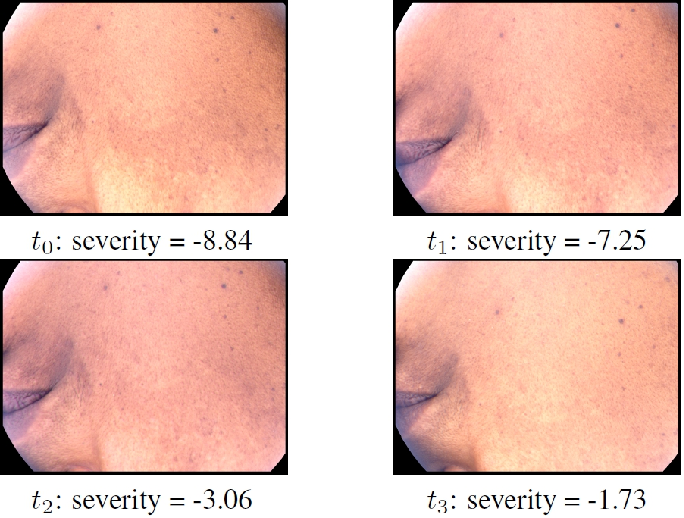Section: New Results
Dermatology
Statistical analysis of skin pigmentation under treatment
Participants : Sylvain Prigent, Xavier Descombes, Josiane Zerubia [contact] .
This work was partially funded by a contract with Galderma R&D [http://www.galderma.com/RampD.aspx ].
One of the steps to evaluate the efficiency of a therapeutic solution is to perform measurements on a series of patients who received the studied treatment. In parallel another treatment is tested on another group of people or on the same group of patients on another skin area. This second treatment is the reference one for the studied pathology or a placebo. We will call it `vehicle'.
For facial hyper-pigmentation, for each studied treatment, a group of patients receives the treatment on one cheek and the vehicle on the other. To this end, patients are selected to have the same hyper-pigmentation severity on the two cheeks. Then multi-spectral images are taken at different times along the treatment period.
We propose a methodology to estimate the efficiency of a treatment by calculating a spectral criteria that maximizes the visibility of the disease comparatively to a healthy reference area. To design such a criterion, we compare three approaches. The first one gives weights to spectral bands in order to get an equivalent of the luminance from the decomposition. This is the standard measure in dermatology. We compare this spectral measurement to a spectral signature obtained by ICA (Independent Components Analysis) in a whole study, and a criterion that searches for the highest contrasted band.
Once a criterion is designed, we compute the hyper-pigmentation severity of a patient by normalizing the pathological area with the healthy area and the active treatment measurement by the vehicle. That gives severity measurement distributions from patients at different times. A Student paired test allows to determine if an active treatment has an effect between two measurement times. The experiments done on 3 treatments and their associated vehicles brought to the following conclusion: The severity measure based on the selection of an optimal band allows to detect a treatment effect sooner than the two other approaches. The severity measurements obtained by the optimal band method is illustrated in figure 25 .



